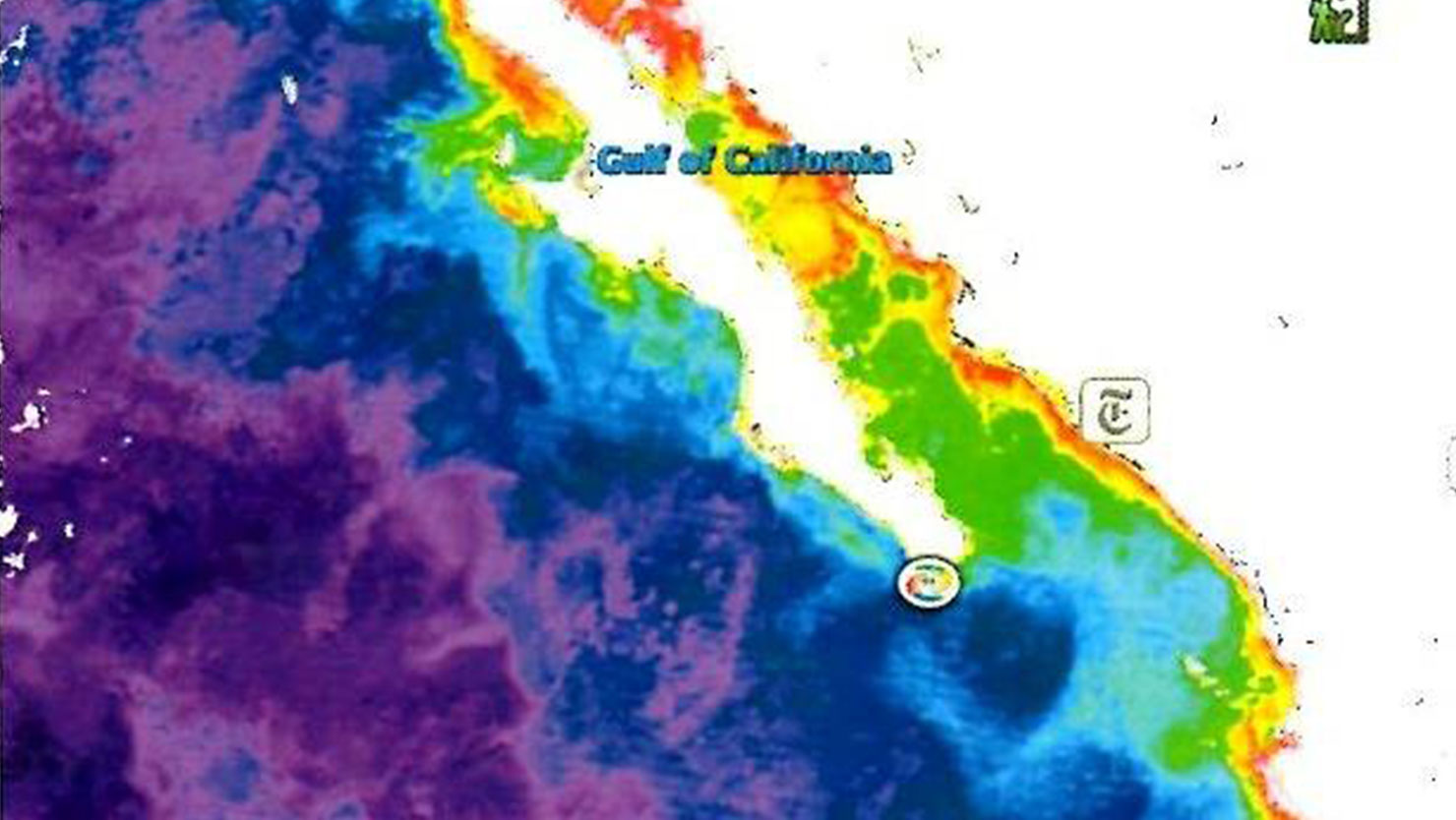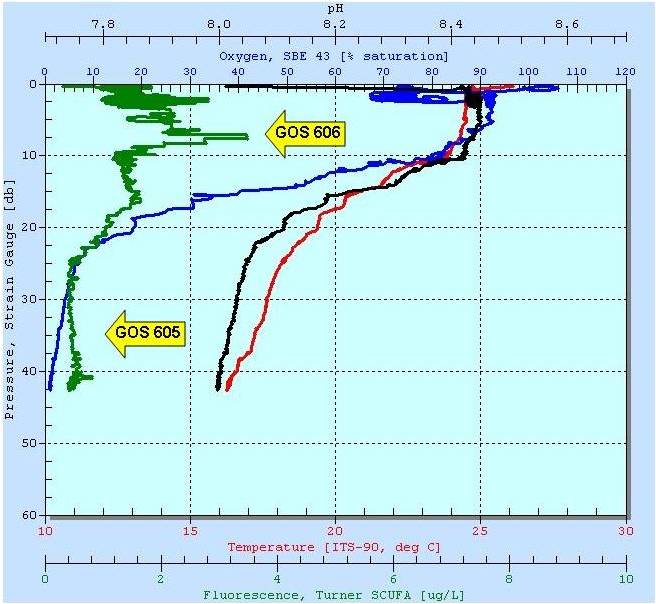Sampling Blooms in Cabo Corrientes

Just south of Puerto Vallarta is Cabo Corrientes, and our satellite data indicate a large bloom extending 25 miles off the coast. As we enter the bloom the water turns an intense green, and there are numerous fish feeding in the area. Sampling conditions are ideal: bright sunshine, light winds, moderate swell. We deploy a large plankton net which rapidly fills with algae and zooplankton. Karen McNish looks at the larger diatoms and zooplankton under the scope while the rest of the crew prepares our instrumentation for deployment.

From the aft cockpit we deploy a CTD equipped with a sampling hose. A standard CTD measures conductivity, temperature and depth: our unit also contained a pH probe and a fluorometer for measuring chlorophyll concentration. As we lower the CTD through the water column, we generate a profile of the ocean at Cabo Corrientes down to 40 meters in depth. At left you can see the CTD plot: depth is plotted on the y-axis as a change in pressure, and pH (black) and temperature (red) are plotted on the top two x-axes, with oxygen (blue) and fluorescence (green) plotted on the bottom two x-axes. In this case, the peak fluorescence (green trace) is at 8 meters in depth, and after that, the concentration of oxygen (blue trace) falls from 90% saturated to 5% saturated. The peak fluorescence indicates the location of the chlorophyll max (or Chlmax), where most of the photosynthetic plankton are located, and the oxygen minimum (or O2 min) indicates an area of intense respiration immediately under the Chlmax. Both of these areas contain a wealth of undescribed microorganisms, and understanding the relationship between photosynthesis and respiration in the ocean is one of the keys to understanding the global carbon cycle. We took samples at 8 meters and at 35 meters before continuing our southward trip.